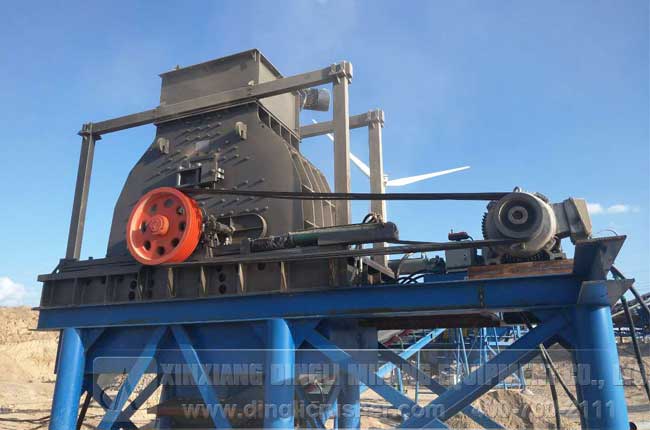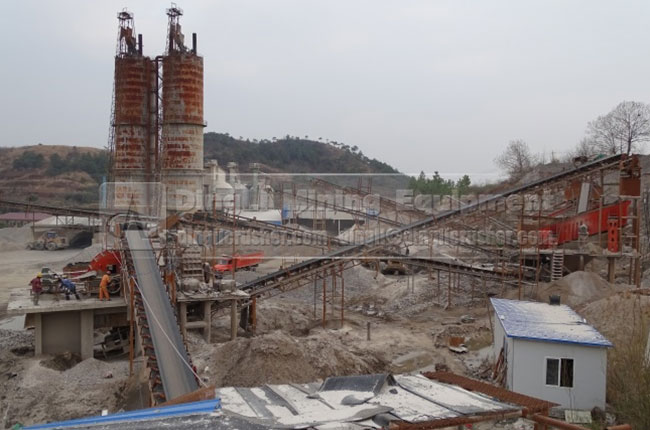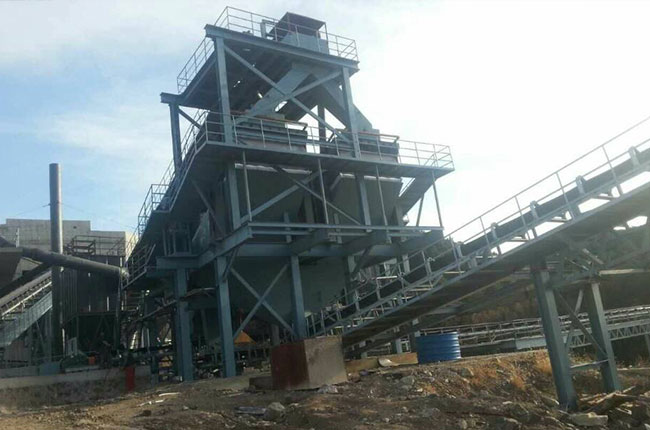 Sand Aggregate IndustryComprehensive Service Provider
Sand Aggregate IndustryComprehensive Service Provider Sand Aggregate IndustryComprehensive Service Provider
Sand Aggregate IndustryComprehensive Service Provider| Model | HP5 | |
| Head diameter | 1,250 mm | 49" |
| Feed opening | 317 mm | 12 1/2" |
| Capacity up to | 600 Mtph | 661 Stph |
| Motor power | 370 kW | 500 hp |
| Total crusher weight | 29 000 kg | 64 000 lbs |
Cavity selection guide
| Minimum setting | Feed opening | ||
| Cavity | Extra fine | 6 mm (0.24") | 50 mm (2.00") |
| Fine | 10 mm (0.39") | 130 mm (2.10") | |
| Medium | 20 mm (0.79") | 195 mm (7.70") | |
| Coarse | 25 mm (1.00") | 252 mm (9.90") | |
| Extra coarse | 30 mm (1.20") | 312 mm (12.30") |
*Note: The processing capacity of the HP5 cone crusher may vary with different materials and feeding sizes.

In this hard rock crushing sites Xinxiang Dingli after-sale servicers are checking machine problems and giving solution to ensure a quick production. Now there are about several hundred after-sale servicers all over the country to better h

The main function of this production line is crushing limestone and dolomite.

1200TPH aggregates production machines were all installed on the foundation that ensure it has a clean production. And with substantial steel structure it has longer service life by few operation wear condition. Xinxiang Dingli hammer crus
The production capacity is mainly affected by the feeding conditions, such as the hardness, humidity, particle - size distribution of the material, and the feeding speed. Excessively hard or wet materials can reduce the production capacity. An overly fast feeding speed may even cause blockages. The degree of wear of the crushing chamber is also crucial. Severe wear can change the chamber shape, affecting the movement trajectory of the material in the chamber and the crushing effect, thus reducing the production capacity. In addition, if the operating parameters of the equipment, such as the eccentricity and rotation speed, are not adjusted to suit the working conditions, it will also have an adverse impact on the production capacity.
Regularly checking and promptly replacing the worn liners of the crushing chamber is of great importance. Worn liners can change the shape of the crushing chamber, resulting in uneven material crushing. At the same time, it is necessary to ensure uniform and continuous feeding to avoid large differences in the force on the material in the crushing chamber due to uneven feeding, which affects the particle size. Reasonably adjusting the discharge opening size of the equipment and strictly controlling it according to the required particle size can also improve the particle - size uniformity. It is also necessary to optimize the operating parameters of the equipment, such as eccentricity and rotation speed, according to the material characteristics to achieve a better crushing effect and particle - size control.
Daily, it is necessary to inspect the appearance of the equipment to check whether there are loose, deformed, or damaged parts. Pay special attention to checking the transmission parts, such as the tension and wear of the belts or chains, and adjust or replace them in a timely manner if necessary. At the same time, check the oil level and oil quality of the lubrication system to ensure that all moving parts are well - lubricated. The inside of the crushing chamber should not be overlooked. Check the wear of the liners and clean the residual materials in the chamber. In addition, conduct a patrol inspection of the electrical system to check whether the wires are loose or aging, and ensure the safe operation of the equipment.
The replacement cycle of vulnerable parts is not fixed and depends on the equipment's usage frequency, working environment, and the characteristics of the processed materials. Generally, the liners of the crushing chamber should be inspected and evaluated after continuous operation for [X] hours or processing [X] tons of materials. If they are severely worn, they should be replaced. The transmission belts or chains should be checked for wear after running for [X] hours or going through [X] start - stop cycles, and a decision on whether to replace them should be made based on the actual situation. As for the filter of the lubrication system, it is recommended to clean or replace it every [X] hours of operation or every [X] oil changes.
Before starting, first check whether there are any obstacles around the equipment to ensure a safe working area. Carefully check whether the connecting bolts of all parts are tightened to avoid loosening during operation. Conduct a comprehensive inspection of the lubrication system to ensure that the oil level is normal, the oil quality is good, and the oil passage is unobstructed. At the same time, check whether there are any foreign objects remaining in the crushing chamber and clean them in a timely manner if there are. In terms of the electrical system, confirm that the voltage is stable, all control switches are in a normal state, and the insulation performance of the motor is good.
There are various reasons for abnormal vibration. It may be due to uneven feeding, resulting in unbalanced distribution of materials in the crushing chamber and uneven stress on the equipment. It may also be that the liners of the crushing chamber are severely worn, causing the chamber shape to be irregular and the material movement trajectory to be abnormal. Faults in the transmission parts, such as loose or worn belts or chains, or damaged bearings, can also cause vibration. In addition, if the equipment foundation is unstable and the anchor bolts are loose, it cannot provide stable support during the operation of the equipment, which will also lead to abnormal vibration.
We are present worldwide and always here to help.
Get in touch today!